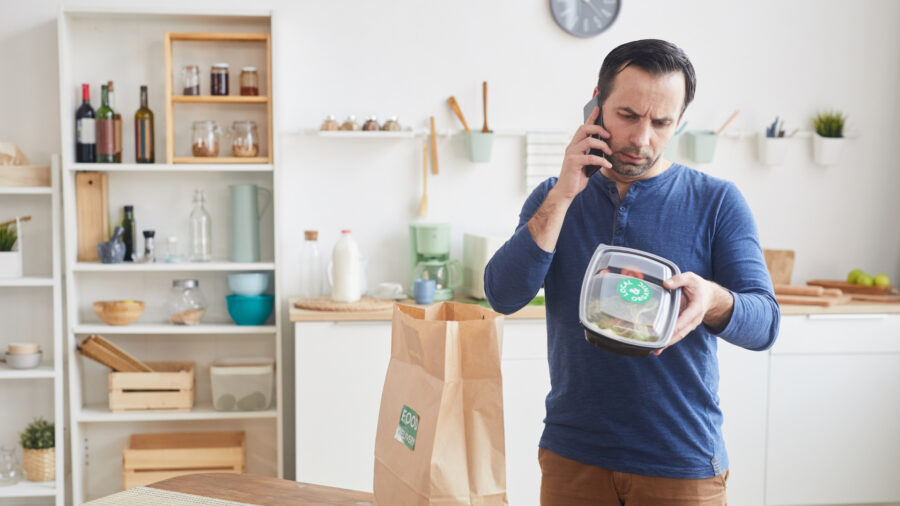Nine out of 10 customers have had a food delivery order go wrong, according to a recent survey by Circuit, a route-planning app for delivery drivers.
In fact, the survey of 1,066 American consumers who had ordered via delivery within the past month found that food delivery errors are quite common these days.
With that, customers commonly (52% of the time) ask for a refund. But 40% ordered from a different restaurant as a result, noted Restaurant Business (June 17).
The reasons for the delivery errors? Restaurants are too busy or understaffed these days, Zhong Xu, CEO of Deliverect, told The Food Institute.
THE BLAME GAME
According to Circuit, 39% of customers file complaints with delivery services when orders go awry, while 22% complain directly to the delivery driver. Meanwhile, more than half of customers (51%) said they would blame restaurants when food orders go wrong.
Other key findings from the survey include the following:
- 34% of Americans expect hot/ready-to-eat meal delivery within 30 minutes
- 54% suspected a delivery driver of eating their food prior to delivery
- 59% reported confronting a food delivery driver
Another eye-opening figure: 66% of survey respondents said they would stop ordering from a restaurant or delivery app after a late delivery.
“Restaurants and third-party delivery companies need to make sure they’re making their customers and the customer experience a priority,” said Xu, whose company integrates online orders to existing POS systems or its delivery-manager app. “Next to food quality, delivering a top-notch brand experience should be at the core of a restaurant’s delivery operation.”
SURVEY FINDINGS BY COHORT
Circuit’s survey revealed that half of Baby Boomers and nearly half of Gen Xers (48%) were upset by late deliveries, compared to 41% of millennials and 29% of Gen Zers.
However, the majority of respondents were pleased with the punctuality of major delivery apps. About 80% said they associated DoorDash, Uber Eats and Grubhub with on-time delivery, for example.
As a result of such mixed results, some restaurants are exploring self-delivery rather than relying on third-party delivery apps, as noted by Restaurant Business.
A FEW SOLUTIONS
Xu feels customers who experience a poor delivery must be promptly compensated, whether it be by receiving a coupon, voucher for a free product, or a complete refund.
Otherwise, he said, restaurants risk losing loyal, repeat customers.
The CEO also added, however, that “the digitization of restaurants continues to accelerate to help increase order accuracy and avoid food delivery errors. Consumers and restaurants are embracing new ways to order food, such as online menus, [and] QR codes.”












